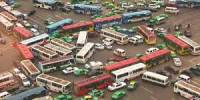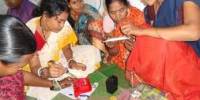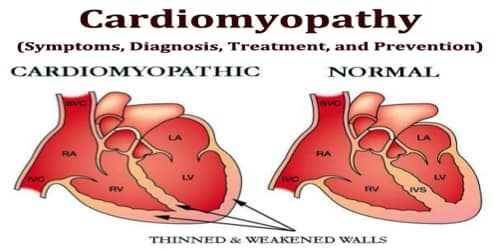Statement of the problem
Poverty is a particular situation of human life. It is related to the standard of living and the socio-economic aspects of living . Though apparently it seems that the concept of poverty is primarily linked with money income. Rapid and sustained poverty reduction requires a pace and pattern of economic growth that helps poor women and men to participate in, contribute to and benefit from it – in short, pro-poor growth.actually it has many non-income dimensions. The issue of poverty is closely related with overall growth and development of a country. With the increases, income, poverty diminishes and in the reverse case, poverty increase. In poor and developing countries, poverty alleviation has become synonymous with the overall economic development.
While progress in reducing poverty in recent years has been encouraging, poverty in Bangladesh continues to be deep and pervasive .Bangladesh has the highest incidence of poverty in south Asia and the third highest number of poor in the world after India and china. preliminary report on household income and Expenditure survey (HIES) 2005 of the Bangladesh Bureau of statistics (BBS) shows downward trend in income poverty. According to the cost of basic Needs (CBN) method use in the survey, the incidence of poverty at the National level declined from 48.9 percent in 2000 to 40.0 percent in 2005. Poverty declined by 1.8 percentage points between 2000and 2005which was percentage points during the previous decade. The incidence of hard core poverty also showed a declining trend during the same period.
Objective of the study :
The objective of the study includes :
i) To know the present status of poverty in Bangladesh
ii) To assess the programme take by the Government for poverty reduction .
iii) To Find out the effectiveness of the poverty reduction programmes in Bangladesh Government.
iv) To Scan the weakness of the programmers initiated for poverty alleviation .
v) To present some remedial measures and Recommendation to the Bangladesh Government.
vi) To innovate some programmes which can meet the chinging need of time.
Scope of the study:
The scope of the study incorporates generally the definition of poverty and especially the Nature and present condition of poverty in Bangladesh . It also include the poverty reduction programme of Bangladesh Government, the strengths and weakness of the programmes. This paper will also add some recommondation to make the poverty reduction programmes more effective and sustainable .
Research Method
Two sources of data collection. (i) primary data (ii) secondary data. Due to time constraint instead of primary data I have depended mainly on secondary sources suchas: Books, Journals, Daily newspapers, Magazin, internet web sites and various government Reports.
I have also being dependent on valuable advice from my term paper Guide and other NAEM faculties. As a students of mathematics I have some observation on the issue which has helped me for writing the term paper.
Definition :
Poverty may be defined as a situation where the availability of the minimum amounts of the goods and services which are the basic necessities of life is not ensured. Assurance of this availability depends on the income required to procure the minimum amounts of those goods and services. This means poverty is defined in terms of money income though its non-income dimensions are equally significant. Food, clothing, accommodation, education, medical services are included in the basic needs list social insecurity, lack of employment opportunities, low wages are the manifestations of poverty. Besides these adequate nutrition, Sanitation facilities, ability to face disaster and overcome it are also considered as basic human needs. Security of minimum consumption in the extreme disastrous situation is also an item in the list of basic needs. As Amartya sen says “identifying poverty is such a task which needs focusing on the minimum conditions of living.”
Different concepts of poverty :
For a broader understanding of poverty two related concepts are important; Absolute poverty and Relative poverty.
The poverty level has a relative nature. The inability to meet the basic needs is termed as absolute poverty. When poverty is estimated on the poverty basis of a comparison of economic conditions of two or more persons, groups or countries, it is termed as relative poverty. In this case, a person, group, community or country is “poorer” than the other.
Many believe that, the poverty line moves up with the growth of average income or general Standard of living of the people of a country. But “if poverty line is determined on the basis of average income only, a group of people will always remain relatively poor” (sen, 1998).
Review of literature :
There has been extensive works in the field of poverty in Bangladesh especially. I have gone through the writing poverty. Definition and measurement by Roohi Zakin Dewan. She has meticulously defined and measured the poverty situation of Bangladesh.
I have also seen the humane development Report by UNDP Bangladesh Economic survey by ministry of Finance, Bangladesh Economic Review- 2006, Economic Adviser’s wing, Finance Division, ministry of Finance. Though many economic Text book have covered the issue I have got interest to see the matter diffently.
Limitations :
1. If I could collect primary data, the paper would be more enriched.
2. The time to prepare this term paper was limited.
3. Lack of time to visit poverty stricken area’s was a big limititation.
4. Lack of knowledge to present such big issue to a small term paper was a big problem.
5. Lack of availibility of documents in this topic was a big problem.
6. There is no fund for this Research work.
Main body
Review of selected programmes for poverty Alleviation
Both the government and non-government organizations have been implementing a number of programmes for employment and income generation and the uplitment of the poor. About 54 percent of development and non-development budget has been allocated for direct and indirect poverty reduction activities. These programmes continue to enhance the entitlement of the poor and at the same time, their empowerment and awareness building.
Social safety Net programmes in Bangladesh :
- Cash transfers programmes
- Food transfers programmes
- Special poverty alleviation programmes
- Micro-credit programmes for self employment and
- Other Special poverty alleviation activities.
Cash transfers programmes
- Old-Age Allowance programmes
- Allowances programme for widowed, Deserted and Destitute women.
- Honorarium programme for insolvent Freedom fighters
- Training and self-employment programme for insolvent Freedom Fighters and their wards
- Fund for Rehabilitation of the Acid Burnt and the physically Handicapped.
- Allowance for the Fully Retarded.
- Cash transfers programmes for education.
_ Primary Education stuspend project (PESP); and
_ Female Secondary School Assistance programme.
- Rural Maintenance programme (RMD) and
- Food for Work programme (Cash)
Old-Age Allowance programmes :
The Ministry of social welfare is responsible for implementing this programme. In FY 2005-06 the budge allocation for this programme was Tk. 324 crore. under this programme 15 lakh old and destitute people are getting monthly allowance at the rate of Tk. 180.
Allowance programme for widowed, Deserted and Destitute women :
The Ministry of women and children affairs has introduced this programme for widowed deserted and destitute women. In FY 2005-06 the budge allocation for this programme was Tk. 136 crore. under this programme the rate of monthly allowance was enhanced from Tk. 165 to 180 and beneficiary coverage stood at 6 lakh 25 thousand in FY 2005-06.
Honorarium programme for insolvent Freedom fighters :
In FY 2004-05, the number of beneficiary under this programme, was 60 thousand. The number of beneficiary coverage was raised from 60 thousand to 70 thousand from 1st July of FY 2005-06.
Training and self-employment programme for insolvent Freedom Fighters and their wards :
In order to bring solvency and to ameliorate the social staty of insolvent freedom fighters, the goverment, has adopted this programme. As many as 25 thousand insolvent freedom fighters or their words from 64 districts have been identified and included the programme.
- Fund for Rehabilitation of the Acid Burnt and the physically Handicapped :
The Ministry of social welfare has introduced a fund for is responsible for rehabilitation of the acid burnt women to mitigate the sufferings of distressed women. In FY 2005-06, the government allocated TK. 20 crore under revenue budget.
- Allowance for the Fully Retarded :
The Ministry of social welfare is implementing this fully subsistance to 1 lakh thougand programme. To provid retarded persons, a programme for paying monthly allowance of Tk. 200 has been introduced. The budget allocation for this programme was Tk. 25 crore in FY 2005-06.
- Primary Education stipend project (PESP) :
Under the Primary Education stipend project poor children are given financial benefits. Over 55 lakh poor children derive benefits from this project per annum. Besides, the project give emphasis on the need for expansion and qualitative improvement of Primary Education.
- Ø Female Secondary School Assistance programme :
This programme has been undertaken with a view to increasing the number of female students in secondary schools, increasing their prospect for future employment and Marriage. In the FY 2005-06, the number of scholarships at different levels was increased by 10 percent. Besides, to encourage the female students to stady at the graduate level. The rate of monthly stipend has been increased form Tk. 225 to 250 and monthly scholarship of Tk. 200 is being given to a further 10,000 female students pursuing studies in specialised subject at graduate honours level.
Food for Work programme (Cash) :
The allocation for this programme was to the tune of Tk. 264 crore in the revised budget of FY 2004-05 and the allocation was raised to TK. 300 crore in the budget of FY 2005-06.
Food Transfers Programmes :
Food for works programme
Vulnerable Group Development (VGD) programme;
Vulnerable Group Feeding (VGD) programme;
Test Relife (TR) programme; and
Gratuitous Relief (GR) programme.
Food for Work programme :
In the revised budget of FY 2004-05, there was an allocation of 8 lakh 70 thousand metric tons of food grains for VGD, VGF, and Food for works programmes, Test Relief and Gratuitous Relief. This allocation was raised to 10 lakh 32 thousand metric tons in FY 2005-06.
Special Poverty Alleviation Programmes :
_ Poverty Alleviation and Goat Development Project
_ Providing incentives and financial assistance to poultry and livestock sector;
_ Poverty Alleviation and Micro-credit Programmes undertaken by Department of Fisheries;
_ Fund for Housing the Homeless;
_ Programme for generating employment for the unemployed youth by the karmasangsthan Bank;
_ Abashan (poverty Alleviation and Rehabilitation) Project.
_ Fund for mitigating Risks due to Natural Disaster;
_ Programme for mitigating Economic shocks; and
_ Fund to meet sudden natural disaster.
Poverty Alleviation and Goat Development Project :
Under this Programme, TK. 7.5 crore was disbursed as micro-credit for purchasing goats to 12980 beneficiaries selected from 440 upazilas of 64 districs during FY 2004-05.
Providing incentives and financial assistance to poultry and livestock sector :
Besides resolving complexity in taking bank credit and reducing rate of interest etc. The amount of credit disbursed to the sector increased from Tk. 79.77 crore in FY 2000-2001 to Tk. 347.8 crore in FY 2005-06.
Poverty Alleviation and Micro-credit Programmes undertaken by Department of Fisheries :
The government disbursed Tk. 3.86 crore as credit to small and marginal fish farmers during FY 2005-06.
Fund for Housing the Homeless :
In order to mitigate the housing problem of the homeless, poor and low-income people in the country. The government constituted a fund for housing with an allocation of Tk. 75 crore in FY 2005-06.
Programmes of the karmasangsthan Bank for generating employment for the unemployed youth :
To utilize the unemployed specially the education unemployed youth of the country in different production oriented and income generating activities, karmasangsthan Bank distributed Tk. 283.06 crore and the recovery of loan stood at Tk. 173.72 crore against Tk. 213.64 crore as recoverable loans (recovery rate is 81 percent).
Abashan (poverty Alleviation and Rehabilitation) Project :
This project is being implemented by the prime minister office, Entirely founded from domestic source. The project is being implemented over a period of seven years (July 2002-June 2009) at a cost of Tk. 657.20 crore.
Fund for mitigating Risks duc to Natural Disasters :
The Government introduced the Fund for mitigating Risks due to Natural Disasters. The fund received allocations of Tk. 75 crore in FY 2005-06.
Specialized Activities for poverty Alleviation :
_ Information and communication Technology (ICT) for poverty alleviation;
_ Rural infrastructure Development programme;
_ Local Government Engineering Department (LGED);
_ Urban poverty Reduction programme;
_ poverty alleviation and socio-economic Development,
_ Palli Daridrya Bimochan Foundation (PDBF)
_ Bangladesh Rural DevelopmentAcademy (BARD), Comilla;
_ Rural DevelopmentAcademy (Bogra); and
_ Department of social services.
Information and communications Technology (ICT) for poverty Alleviation :
It is widely recognised that the use of ICT has the potential to make easier the process of achieving the MDG of poverty reduction by 2015.
_ Rural Infrastructure Development programme local Government Engineering Department (LGED) under the ministry of local Government, Rural Development and Co-operatives, has been implementing various rural infrastructure development. Programmers, especially rural roads, bridges/culverts, growth centers, construction of embankments etc in rural areas. In FY 2005-06 the local Government Engineering Department constructed 5872 km. of paved roads, 6573 km. of dirt roads, 420 union parishad Building. These programmes created employment for about 132.77 crore person days between 2000-01 and 2005-06 (Table-1) .
Table – 1 : Rural infrastructure Development Programme Under LGED.
| Activities | 2000-01 cumulative | 2001-02 | 2002-03 | 2003-04 | 2004-05 | 2005-06 | cumulative (up to June 2006) |
| Dirt Road (km) | 36359 | 4555 | 4770 | 6252 | 6040 | 6573 | 64649 |
| paved Road (km) | 19855 | 3255 | 3829 | 4804 | 5237 | 5872 | 42852 |
| Bridge/Culvert (metre) | 288531 | 50882 | 42937 | 49405 | 60908 | 39728 | 532391 |
| Growth Centre (no) | 1237 | 124 | 142 | 154 | 186 | 147 | 1990 |
| Employment Generation (lakh person-days) | 7343.54 | 856.68 | 948.05 | 1338.1 | 121543 | 1574.91 | 13276.73 |
Source : Local Government Engineering Department.
Urban poverty Reduction Programme :
The Government is implementing Urban Infrastructure Development Programme for poverty alleviation in the Urban area. At the same time the Government is Continiung with the micro-credit programme. To alleviate urban programme is being implemented under direct supervision of 6 city corporations and 21 municipalities.
Poverty Alleviation and Socio-Economic Development under the community based wealth Management Programme of LGED and funded by IFAD. 1.35 lakh members will be employed through training and various income generating activities. An amount of Tk. 6.00 crore has been distributed as micro credit among them.
Palli Daridrya Bimochan Foundation (PDBF)
The objectives of the palli Daridrya Bimochan Foundation (PDBF) are to alleviate poverty in the rural area and promote Socio-economic development. PDBF has been Implementing its activities in 185 upazilas of 28 districts. About 508121 asset less men and women of these areas have been organised into 17195 groups. These upazilas Constitute about one third of the geographical area of the country with highest incidence of rural poverty. About 94 percent beneficiaries of this Foundation are women. The Foundation made a cumulative disbusement of Tk. 183457 Crore as micro-credit up to June 2006. the Total amount of savings of the beneficiaries is to the ture of Tk. 90.61 crore and the recovery rate is 98 percent. To achieve PDBF’s goals, Training has been imparted for human resource development for about 50 lakh person days.
Bangladesh Rural DevelopmentAcademy (BARD), Comilla:
Small Farmers and landless labours Development programme (SEDP) of Bangladesh Rural Development Academy (BARD), Comilla provided collateral free micro credit to the ture of Tk. 92.13 crore to 41046 beneficiaries of 8171 non formal groups under 30 Upazilaa of 8 districts up to June 2006 and female members constitute 51 percent of the total beneficiaries. Beside, under the project titled ‘‘Comprehensive village Development programme (CVDP)”, 13284 members were enlisted as member in 100 co-operative societies up to June 2006. the government accepted CVDP as a model of National village development to expand it throughout the country in 2005 and BARD (comilla), RDA (Bogra), BRDB and Department of cooperatives have been incorporated within this programme. Other than this, through women education, income and nutrition Development project, Tk. 2949 lakh was distributed up to June 2006 through 19 non formal organizations.
Rural DevelopmentAcademy (RDA), Bogra :
RuralDevelopmentAcademy, Bogra has been organising training and applied research programme in order to alleviate poverty and to improved the Socio-Economic condition of the rural people. During FY 2005-06, 3273 participants were trained through 70 training courses. To develop repliable model for rural development and poverty alleviation, it is implementing comprehensive rural development programme, Expansion and modernisation of RDA demonstration farm, Arsenic Free Drinking water supply project, Good seed initiative etc. The cumulative disbusement and recovery of credit under these projects, Stood at Tk. 1.91 crore and Tk. 1.80 crore respectively up to June 2006.
Analysis of information & findings :
After analysis data from various sources we see the following changing ternds of poverty in Bangladesh :
The report of HIES-2005 reveals that at the national level, incidence of poverty registered a decreasing tend in 2005 as compared with 2000 based on CBN method. The incidence of poverty at the national level declined from 48.9 percent in 2000 to 40.0 percent in 2005 based on the upper poverty line. Using the lower poverty line, the survey also shows that the incidence of poverty decreased from 33.7 percent to 25.5 percent at the national level during the same period.
Table -2 : Head Count Rate (CBN) of incidence of poverty.
Residence | Upper poverty line | lower poverty line | ||
2005 | 2000 | 2005 | 2000 | |
| National | 40.0 | 48.9 | 25.5 | 33.7 |
| Rural | 43.8 | 52.3 | 29.3 | 37.4 |
| Urban | 28.4 | 35.2 | 13.7 | 19.4 |
Source : BBS 2006, HIES -2005.
Using the upper poverty line, the estimates of Head count Rate (HCR) of incidence of poverty show a reduction of HCR by 8.9 percent the National Level, 8.5 percent in the rural area and 6.8 percent in the urban area during the period from 2000 to 2005. During the same period, using the lower poverty line, it is also recorded national level, 8.1 percent in rural area 5.7 percent in urban area.
Head count Rate (HCR) by Divisions :
The Head count Rate of incidence of poverty is 6 administrative divisions with rural and urban breadown is presented below :
Table -3 : Division wise incidence of poverty (HCR) by CBN method :
National | 2005 | 2000 | ||||
/Division | Using the lower poverty line | |||||
National | Rural | Urban | National | Rural | Urban | |
National Barisal Chittagong Dhaka Khulna Rajshahi Sylhet | 25.1 35.6 16.1 19.9 31.6 34.5 20.8 | 28.6 37.2 18.7 26.1 32.7 35.6 22.3 | 14.6 26.4 8.1 9.6 27.8 28.4 11.0 | 34.3 34.7 27.5 34.5 32.3 42.7 26.7 | 37.9 35.9 30.1 43.6 34.0 43.9 26.1 | 20.0 21.2 17.1 15.8 23.0 34.5 35.5 |
| Using the upper poverty line | ||||||
National | Rural | Urban | National | Rural | Urban | |
National Barisal Chittagong Dhaka Khulna Rajshahi Sylhet | 40.0 52.0 34.0 32.0 45.7 51.2 33.8 | 43.8 54.1 36.0 39.0 46.5 52.3 36.1 | 28.4 40.4 27.8 20.2 43.2 45.2 18.6 | 48.9 53.1 45.7 46.7 45.1 56.7 42.4 | 52.3 55.1 46.3 55.9 46.4 58.5 41.9 | 35.2 32.0 44.2 28.2 38.5 44.5 49.6 |
Source : BBS 2006, HIES – 2005.
The estimates of head count Rate using the upper poverty line revealed that Barisal Division had the highest incidence of poverty followed by Rajshahi and Khulna Division. On the other hand, Dhaka Division recorded the lowest incidence of poverty followed by sylhet and Chittagong Division.
The incidence of poverty in Dhaka Division reduced to 32.0 percent in 2005 from 46.7 percent in 2000. Sharp reduction of HCR using the upper poverty line can be attributed to high poverty reduction in the rural area during this period. The incidence of poverty in the rural area of Dhaka Division came down to 39.0 percent in 2005 from 55.9 percent in 2000. The reduction of HRC is also significant in the urban area. It came down to 20.2 percent in 2005 from 24.2 percent in 2000. The incidence of poverty Slightly incresed in Khulna Division.
The estimates of HCR in 2005 using the lower poverty line showed that chittagong Division recorded the lowest incidence of poverty followed by Dhaka and Sylhet Division. The highest reduction of incidence of poverty using the lower poverty line occurred in Dhaka Division followed by Chittagong. On the other hand, poverty incidence using the lower poverty increased slightly in Barisal Division during the period.
Recommendations :
1. The target group of the Government project is very limited. It must be expended through the Country. So that all the poor can be benefited.
2. The allocation of Government budget should be increased to make programmes effective and extensive.
3. New branches of karmasangsthan bank should be open the serve more people. the loan limit of this bank may be increase especially for establising labour intensive Agro-based small and cottage industries.
4. Effective measure must be taken to check the losses in the intermediary level so that the poor can take the best possible benefits from Government project.
5. Government banks and financial institution should pay more attention on small and medium scale enterprizes insted of corporate services.
6. The number of rural development training institute should be incresed which will positively contributed to make skilled manpower.
7. The “comilla approch “ should be extended throught the country.
8. A pro-poor land reform should be implemented and equatiable distribution of “khas land” to the land less people must be ensured.
9. Small and landless farmer’s have to be organized and be motivated in co-operative forming.
10. Modern information and communication technology can be effectively used to increased rural production and can it boast their marketing system.
11. Development of rural infrastructure is very much needed.
12. The micro-credit loan limits must be increased to make the poverty alleviation initative dynamic.
13. To reach the desired goal a co-ordination between the Government and NGO’s activities is a must .
14. The Government Banks should be distributed more loan among the poor people.
15. Government should start the Jakat system to alleviate the poverty.
Bibliography
1. Bangladesh Economic Review-2006, Economic Advisers wing, Finance Division , Ministry of Finance.
2. eywbqv`x cÖwkÿY g¨vbyqvj, Dbœqb A_©bxwZ (1g LÐ), cÖKvkK RvZxq wkÿv e¨e¯’vcbv GKv‡Wgx (bv‡qg), cÖ_g cÖKvk-GwcÖj-2004|
3. ‡gv: Aveyj †nv‡mb/†gvKv‡¤§j †nv‡mb, Dbœqb cÖm½ : evsjv‡`k †cªwÿZ MwZaviv cÖKvkbx, XvKv, cÖ_g cÖKvk RyjvB 1999|
4. ‡gv: kvgmyj Kexi Lvb, evsjv‡`‡ki A_©bxwZ, 2q ms¯‹iY, XvKv : wek¦we`¨vjq gÄyix Kwgkb-1996|
5. Md. Abdul Quddus, Editor, poverty FocusedRuralDevelopmentBangladeshAcademy for Rural Development (BARD), comilla; 1995.
6. Dr. Muhammad Samad, Participation of the Rural poor in Government and NGO programms; Dhaka mowla Brothers-2002.
7. A Report to the like minded Group, Rural poverty in Bangladesh, the University press limited-1990.
8. Motiur Rahman, poverty issue in Rural Bangladesh. the University press limited-1994.
9. Bangladesh Bureau of Statistics, Rural poverty monitoring survey November-1997.
10. W.W.W. google. com.
11. W.W.W. yahoo. com.
















